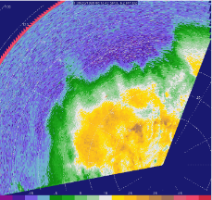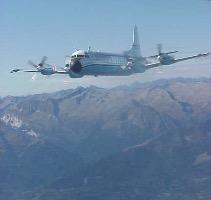Radar Polarization has been introduced to the National Weather Service WSR-88D radar network. Detection of hazardous weather is one of the primary reasons that radar polarization is being adapted to the WSR-88Ds. Severe storm hazards are the primary focus, but can we use polarization technology to detect winter hazards as well? The datasets from the Mesoscale Alpine Project, conducted in the late 1990s in the Alpine region of Switzerland and Italy, and the PLOWS project, provided unique opportunities to evaluate and understand whether supercooled water, the cause of aircraft icing in winter storms, could be detected using polarimetric radar, and how various ice particle habits contribute to the polarization signature. The availability of aircraft measurements of supercooled water droplets and ice particles in conjunction with collocated polarization radar measurements from NCAR’ SPOL radar and from the UAH MAX radar, presented a unique opportunity to evaluate particle classification and particularly focus on supercooled water or ice habit identification.
At the University of Illinois we have focused on improving radar based particle identification in two ways: first, we investigated the potential of improving supercooled water detection using particle classification with polarization radar. Second, we developed a new technique for introducing probabilistic estimates of particle classification, providing a quantitative measure of the uncertainty of particle classification at each point in space. Data for this work came from the Mesoscale Alpine Program, specifically from the NCAR S-Pol radar and from instrumentation aboard the NCAR Electra research aircraft and from PLOWS with the C-130 and the MAX radar. To do these evaluations, “matched” data sets (points at which aircraft observations could be compared directly to radar observations) were developed in each project. Statistical analysis of the data revealed that our typing algorithm could identify supercooled water or other features with some statistical confidence.
Publications
- Bluestein, H. B., B. A. Albrecht, M. Hardesty, D. Rust, D. Parsons, R. Wakimoto, and R. M. Rauber, 2001: Ground-based mobile instrument workshop summary, 23-24 February 2001, Boulder, Colorado. Bull. Amer. Met. Soc. 82, 681-694.
- Plummer, D.M., S. Goke, R.M. Rauber, and L. Di Girolamo, 2010: Discrimination of mixed- vs. icephase clouds using dual polarization radar with application to detection of aircraft icing regions. J. Appl. Meteor. Climatol., 49, 920-936.
- Bluestein, H. B., R. M. Rauber, D. W. Burgess, B. Albrecht, S. M. Ellis, Y. P. Richardson, D. P. Jorgensen, S. J. Frasier, P. Chilson, R. D. Palmer, S. E. Yuter, W.-C. Lee, D. C. Dowell, P. L. Smith, P. M. Markowski, K. Friedrich and T. M. Weckwerth, 2014: Summary of the 2012 National Science Foundation Community Workshop On Radar Technologies. Bull. Amer. Meteor. Soc., 95, 1850- 1861.
- Finlon, J. A., G. M. McFarquhar, R. M. Rauber, D. M. Plummer, B. F. Jewett, D. Leon, and K. R. Knupp, 2016: A Comparison of X-band Polarization Parameters with In-Situ Microphysical Measurements in the Comma Head of Two Winter Cyclones. J. Appl. Meteor. Clim., 55, 2549-2574.


